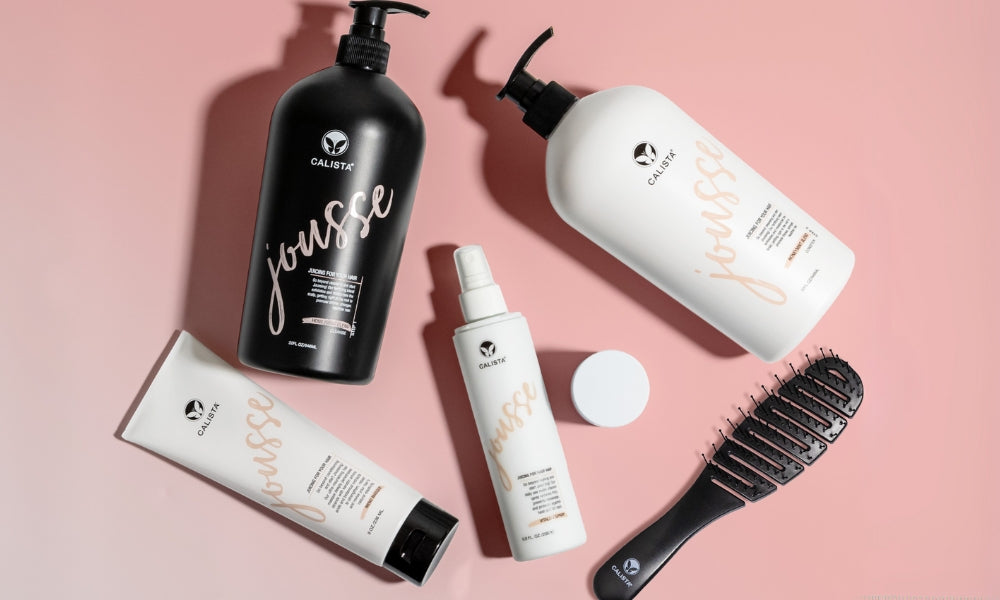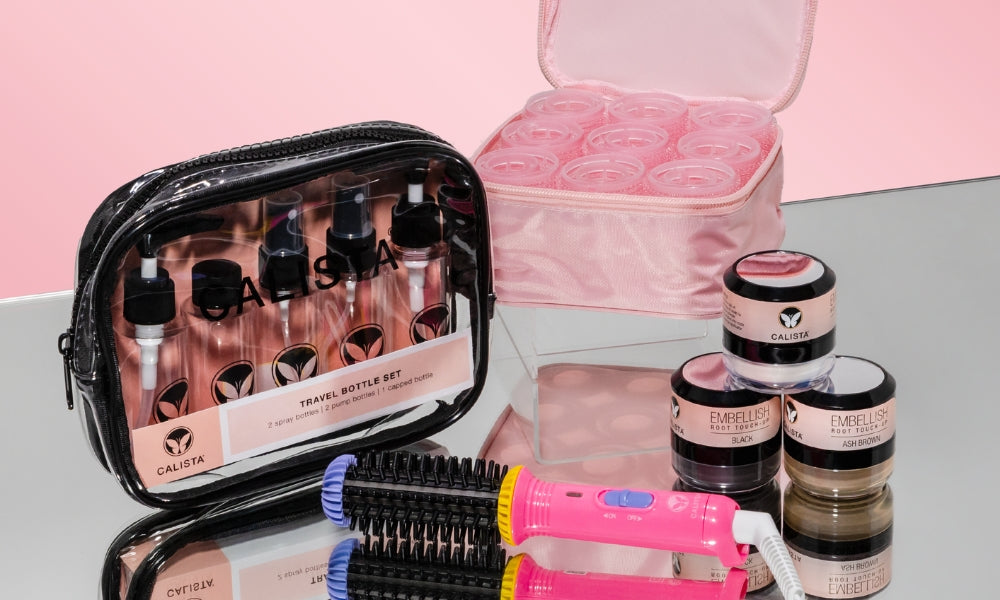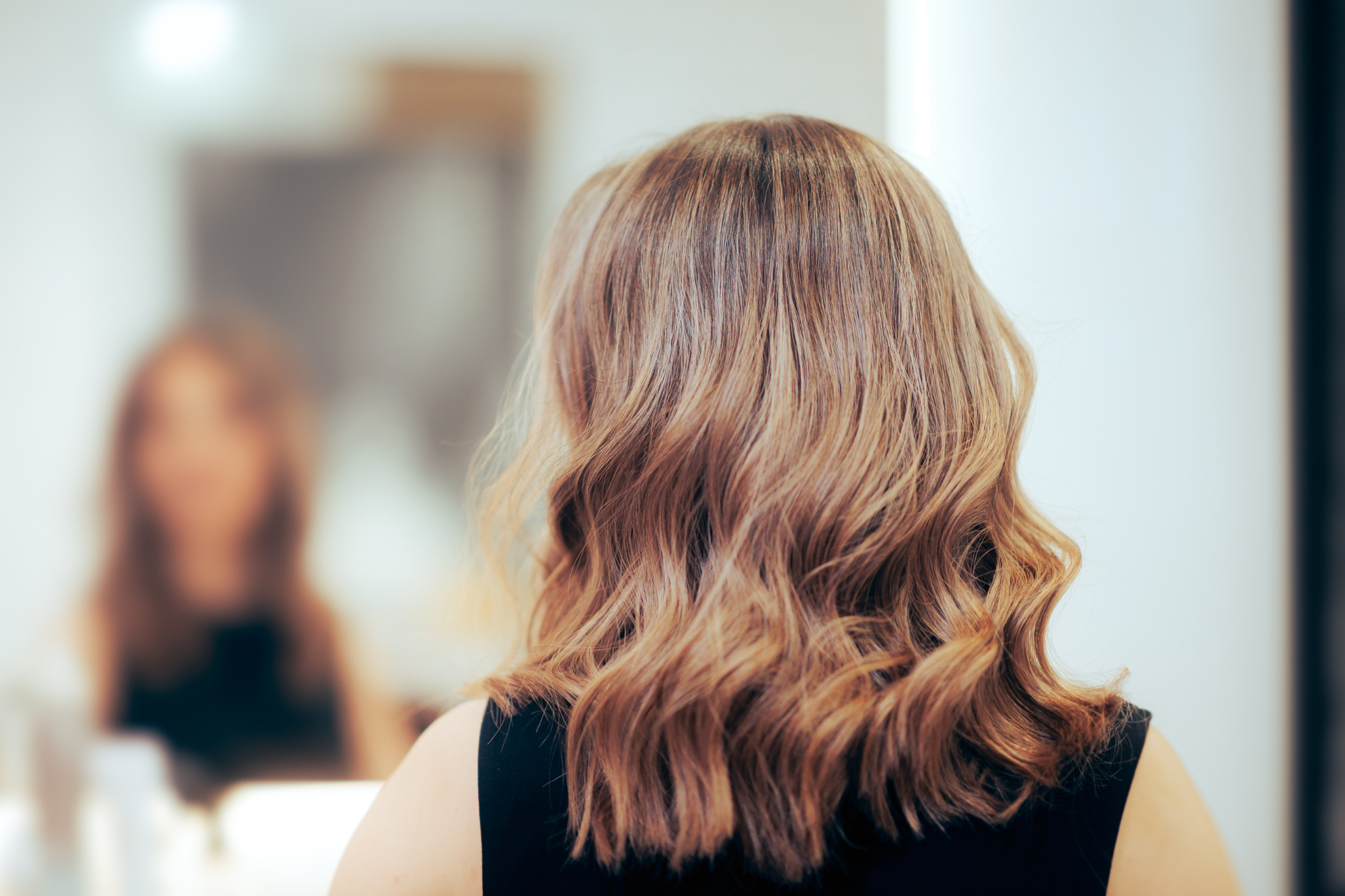Like all transformations, hair changes don’t happen overnight. Aging causes a lot of changes, so many of them valuable beyond measure. Things like becoming more comfortable in your own skin, acquiring more knowledge about the world, and building a life that fulfills you are all beautiful effects that can only take form over time. However, aging can also bring on some other changes that we look upon less favorably. At Calista, the main changes we’re interested in helping you prepare for are those that affect your hair.
We’re all about embracing your hair at every stage, so think of this guide not as a warning or a negative look into the future, but instead as a way to be prepared for these inevitable changes and embrace them as part of the journey. After all, the journey is what it’s all about. Keep reading for some of the most common hair changes you can expect to see in your 40s and how to adjust your routine so that these changes don’t cause you any distress or panic.
It’s just hair! And it’s just life! We promise.
Growth Pattern
It’s no secret that hair growth slows down as we get older. By midlife and beyond, our hair is spending less time in the growth phase and more time in the resting phase, meaning it not only grows a little more slowly, but also may not be able to grow as long as it could in years past. While this can be a side effect of menopause, genetics are also to blame. As you age, the hair follicles that were once thick will become thinner, lighter, and finer. Additionally, every time one of your hair follicles repeats the growth cycle, the hair that grows in may be a little weaker. This causes your hair to be more prone to breakage, preventing you from growing past a certain length.
How to Help: While we all know there is no way to beat aging, there are ways to set yourself up for more success in improving your hair growth rate. A healthy scalp is the foundation for healthy hair, so using a shampoo and conditioner that actually treat the scalp is a great place to start. That being said, make sure you aren’t over-washing your hair! Two to three times per week is plenty to nourish your scalp and create a foundation for healthy growth while also ensuring you aren’t stripping your hair of its remaining natural oils.
Thickness & Strength
As we mentioned above, as we age, our hair grows in a little slower and thinner with each growth cycle. In addition to this, the protective outer cuticle that houses each strand becomes weaker. This means that hair is less likely to bounce back and more likely to break. This has to do with the changing hair growth cycles, but also with your body’s natural oil production. As with anything else, our bodies product less of these natural oils as we age, often starting in our early 40s or even late 30s. The decline in natural production results in hair that is less thick and strong, and even less shiny, smooth, and soft.
How to Help: Be kind to your hair! Always employ a heat protectant spray, keep hot tools on their lowest possible heat setting, and don’t use brushes that yank or pull your hair when trying to detangle. We recommend Jousse Vitality Spray as the ultimate companion for aging hair. Not only does it act as a heat protectant before exposing your hair to hot tools or UV rays, it also assists with detangling so you’re less likely to break hair while brushing and infuses hair with vitamins and minerals that can act as restorative agents for strength and thickness.
Color
Perhaps the most obvious change of the bunch: aging hair starts to go gray! What was once a few stray silver strands popping up as you perform your morning blowout has become a patch here and there, or maybe even the majority of your hair. This comes from those pesky follicles mentioned previously – not only do they control the thickness of your hair regrowth, but they also control the color. Your hair follicles produce melanin, which gives your hair its natural pigment. As this process starts to slow down, there is less and less melanin being produced, causing your hair to become lighter, leading to graying that usually stats at your temples and slowly extends to your crown.
How to Help: Beyond the obvious solution of actively coloring your hair or using temporary hair color, we love the idea of embracing your gray and keeping your hair as hydrated as possible while doing so. Set the stage for healthy hair by using a nutrient-rich shampoo and conditioner that treat the scalp as well as the hair and prevent frizzy, lifeless hair. When gray is well taken care of, it shines just as beautifully as any other hair color.
We hope this info and these tips were helpful and encouraging! At Calista, we want you to embrace your hair at every stage and have all of the information and solutions at your fingertips.
Are there any other topics on aging hair you’d like us to cover? Let us know in the comment section or comment on one of our recent social posts on Facebook (Calista by Maria McCool) or Instagram (@calistatools).









Leave a comment